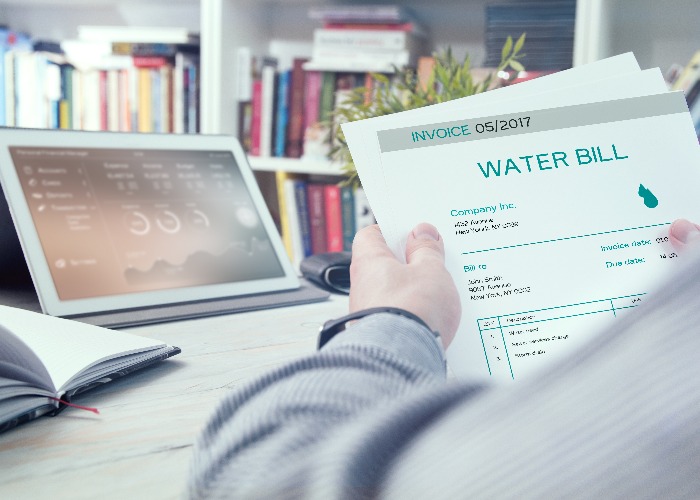Bill shock: a hidden toilet leak caused my water bill to double – how to know if your loo is leaking

When my water bill soared, I was shocked to discover the cost of an unnoticed leak.
I rarely give our toilet a second thought.
It does its job, and I’ve never had any complaints – until I had a letter from my water company telling me that my bill was increasing from £25 to £50 per month.
I almost spat out my tea.
According to the letter, my apparent increase in usage could have several causes.
I had more people living with me or had started to take more showers.
None of this made any sense.
Our family makeup hasn’t changed (me, partner and two children) and we take the same number of showers we always did.
Admittedly, we are pretty conservative users so our bill is probably lower than most.
Average water bills for 2024 revealed
The tissue test
As my first instinct is usually to assume I’m being ripped off, I immediately rang my water company.
A helpful man named James said he was about to ask me an embarrassing question…
When was the last time I flushed the loo?
I had no idea. It’s not something I routinely monitor…
I said approximately half an hour ago. To be honest, this was a total guess.
He suggested the problem could a leaky loo and that the same thing had happened to him.
"If you’ve got to go"…
He told me to dry the toilet with a piece of tissue paper and to apply another piece to the back of the loo (or the pan as described it).
I should then leave the tissue there for up to four hours without flushing, but he understood if “you’ve got to go, you’ve got to go”.
Apparently, the strip remaining dry proves everything is fine.
A wet piece of loo roll indicated we had a leak. And not to go into too much detail, but the tissue was very wet pretty quickly.
The best and worst energy suppliers revealed
The shocking cost of a leaking toilet
According to statistics from Wessex Water, a leaking toilet could cost you approximately £50 a month if you’re on a water meter.
While trickling down the pan often goes unnoticed (I certainly never noticed), it can waste 200 to 400 litres of water per day, which is the equivalent to flushing 50 to 100 times.
In our case, the plumber confirmed (and fixed) the leak quickly – although the £200 cost wasn’t great!
Who’s responsible for a leak?
Before we identified the culprit, I started to panic. Was there some hidden underground leak?
Would the bill run into thousands? I imagined water flooding the street and me footing the bill.
It got me thinking. Who would be responsible in this scenario?
Embarrassingly, I’ve spent more than 15 years as a personal finance journalist and wasn’t sure.
So, I did some digging.
The responsibility depends on where the leak occurs.
Your water company is responsible for repairing leaks that affect public mains, including the pipes that run to the boundary of your property.
However, once the water passes into your private pipework, you become liable.
Have you paid too much for your water bill?
Am I covered by my insurance?
Whether you’re covered by your insurance depends on the type of policy you have.
Buildings insurance typically covers damage to the structure of your home, such as walls, floors and ceilings.
However, the leak must be sudden and not due to wear and tear.
If the leak occurs gradually (as ours did), you probably won’t be covered.
If a leaking toilet damages your property, you might be able to claim under your contents cover.
Again, the leak must be unexpected, not the result of ongoing maintenance issues.
Four ways to spot a leak
If your water bill has gone up, there are telltale signs that a leaky loo could be to blame (all of which I missed).
1. Weird noises
A leaking toilet may make a hissing or dripping sound. If you hear water running when the toilet hasn't been flushed, this could be a sign of a slow leak.
2. Check the bowl
One of the simplest ways to spot a leak is to check the water level. After flushing, the water should settle at a consistent level. If the water level drops or you notice a trickling sound, there could be a problem.
3. Inspect the flapper valve
The flapper valve controls the flow of water from the cistern to the bowl. Over time, it can become cracked. You can inspect the flapper by opening the cistern. It will look like a large disc over an opening at the bottom of the tank.
4. Check the water supply line
Inspect the connections at the base of the toilet. If you find spot pooling water, tighten the connections or replace any worn-out parts, such as washers.
The washer might look a small, flat, round rubber or plastic ring, which creates a seal in different parts of the loo.
And, if all else fails, call a plumber. Despite my amateur efforts to fix the job, we definitely needed professional advice.
Comments
Do you want to comment on this article? You need to be signed in for this feature